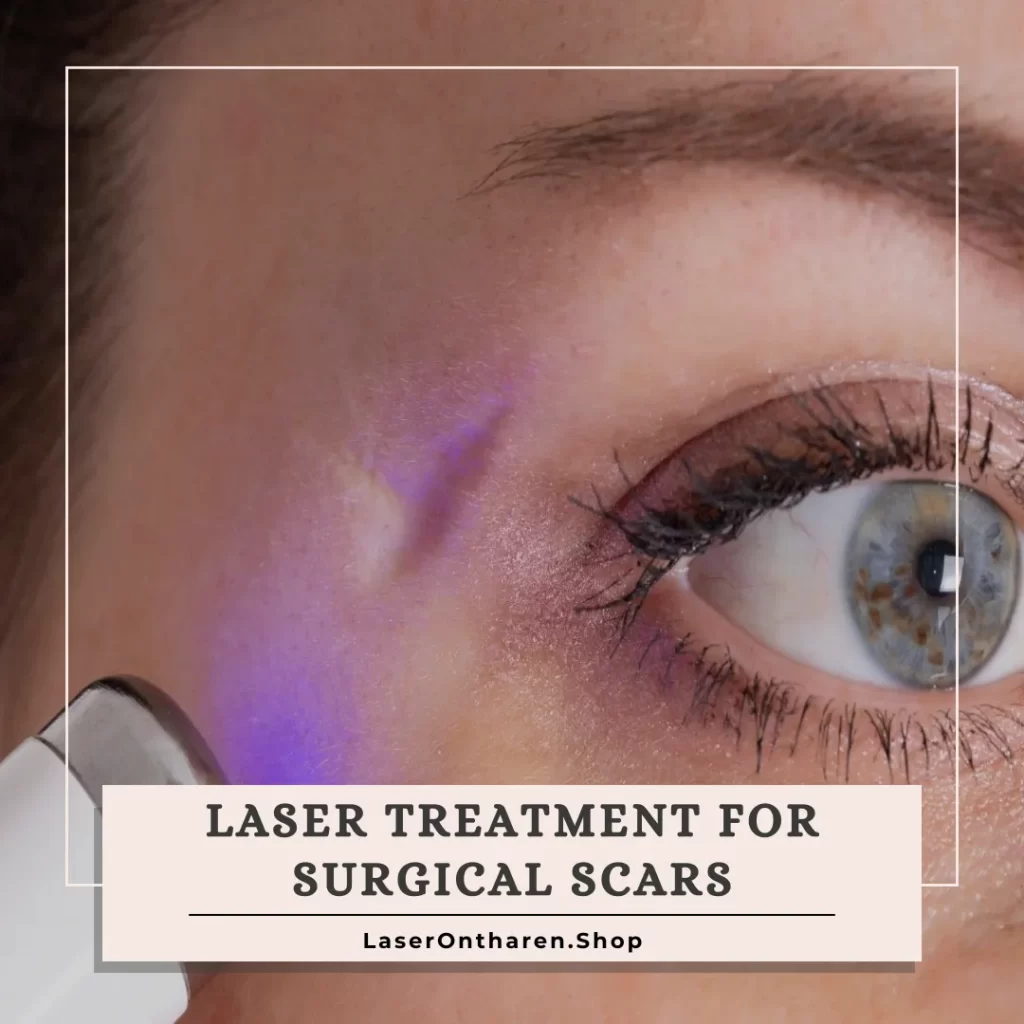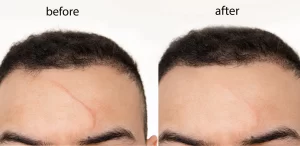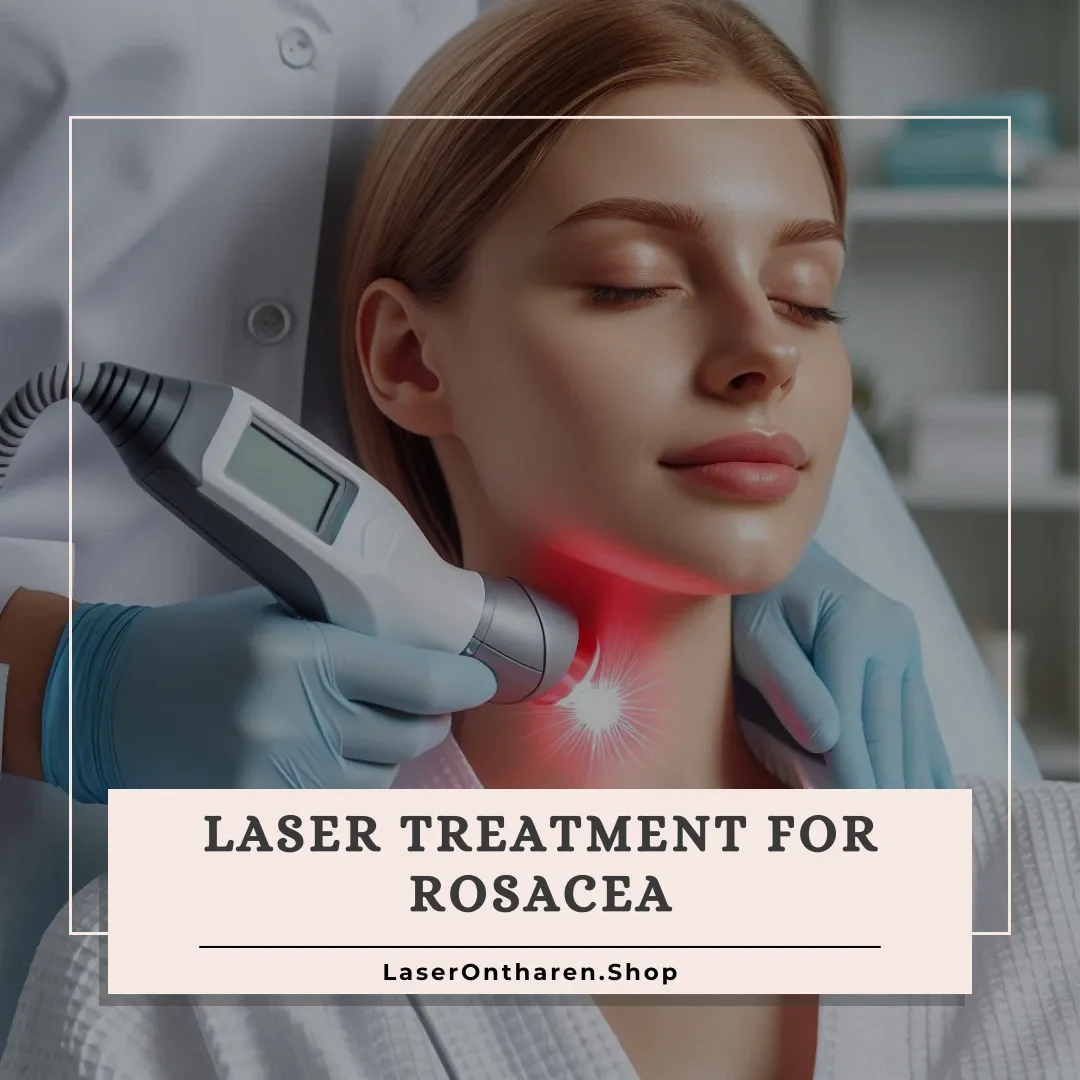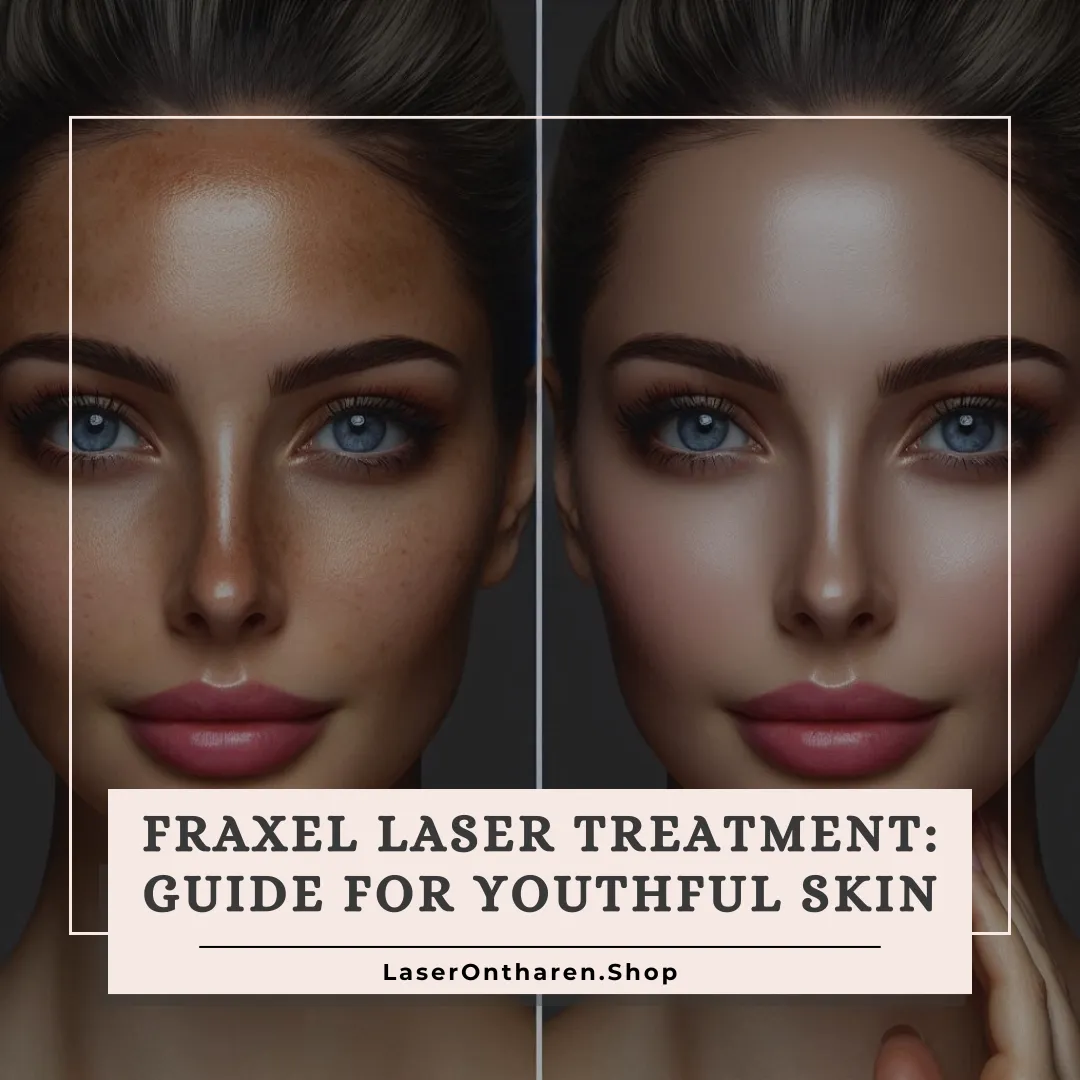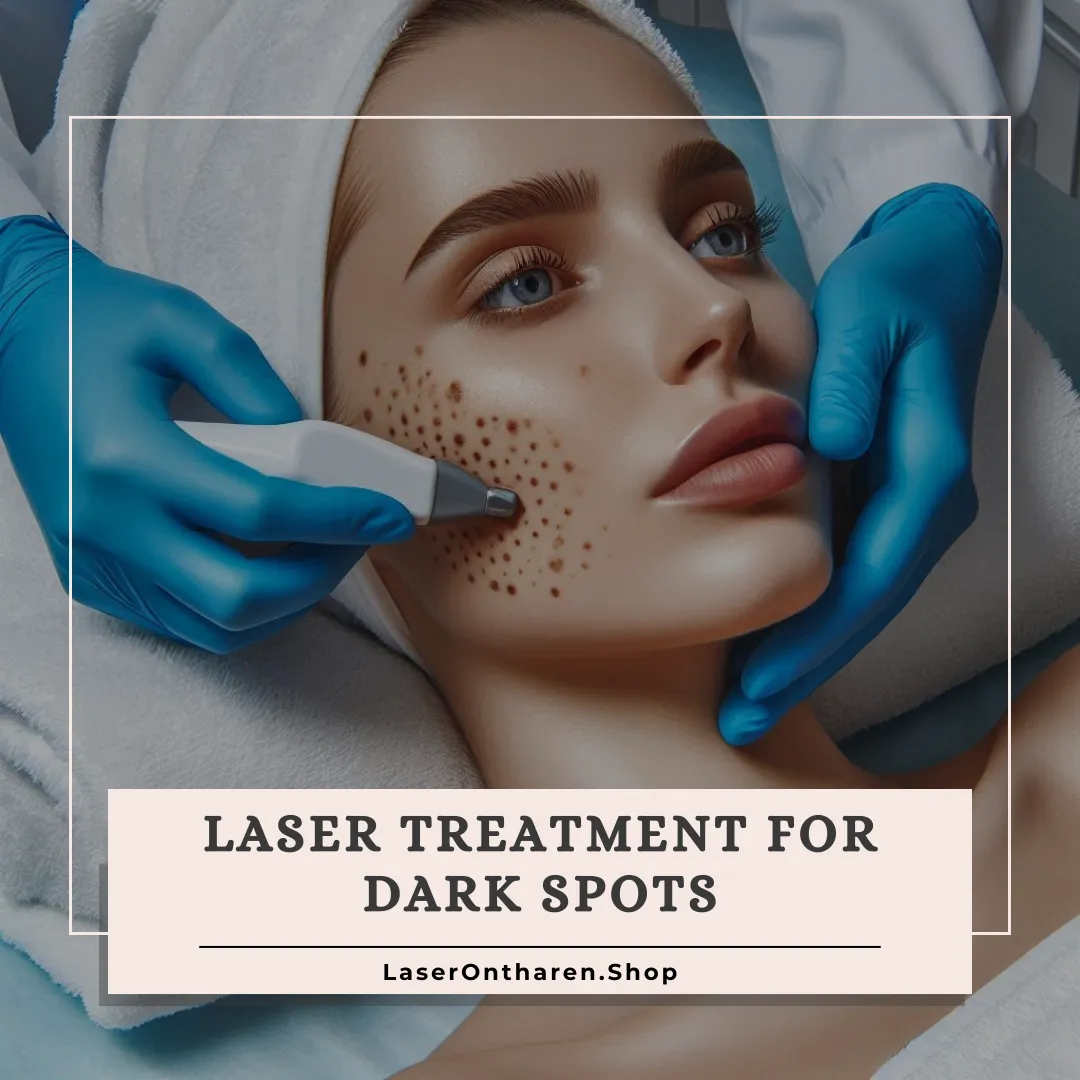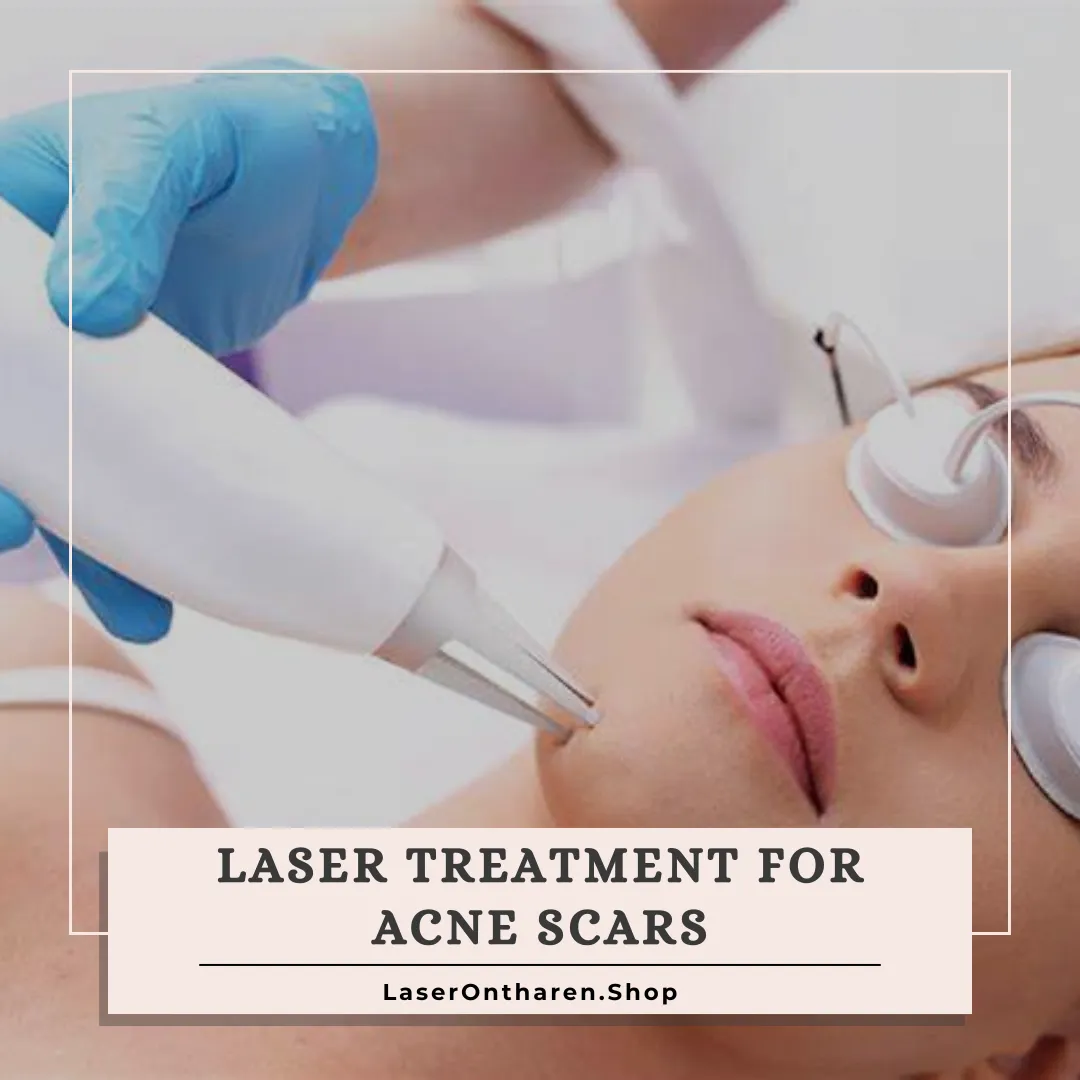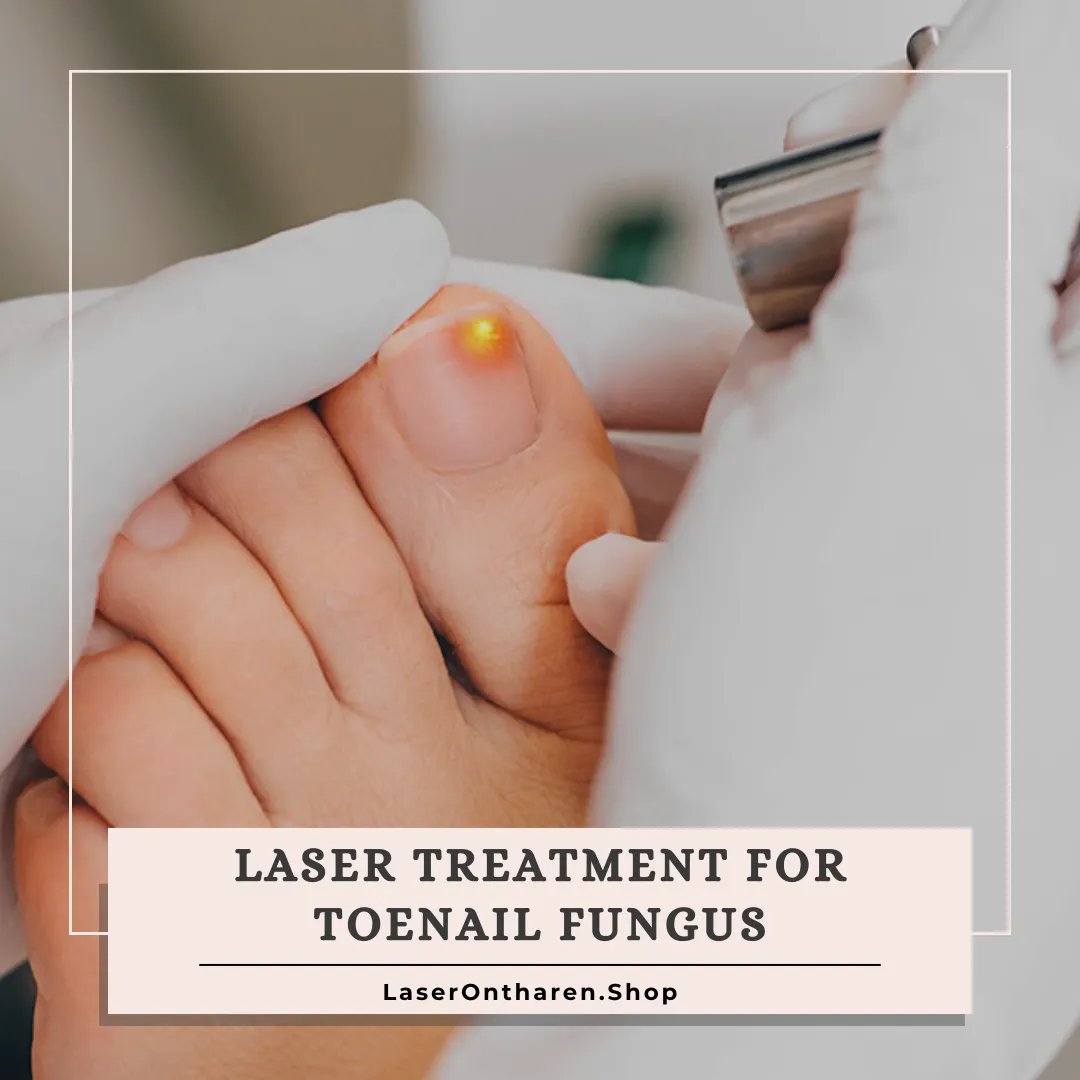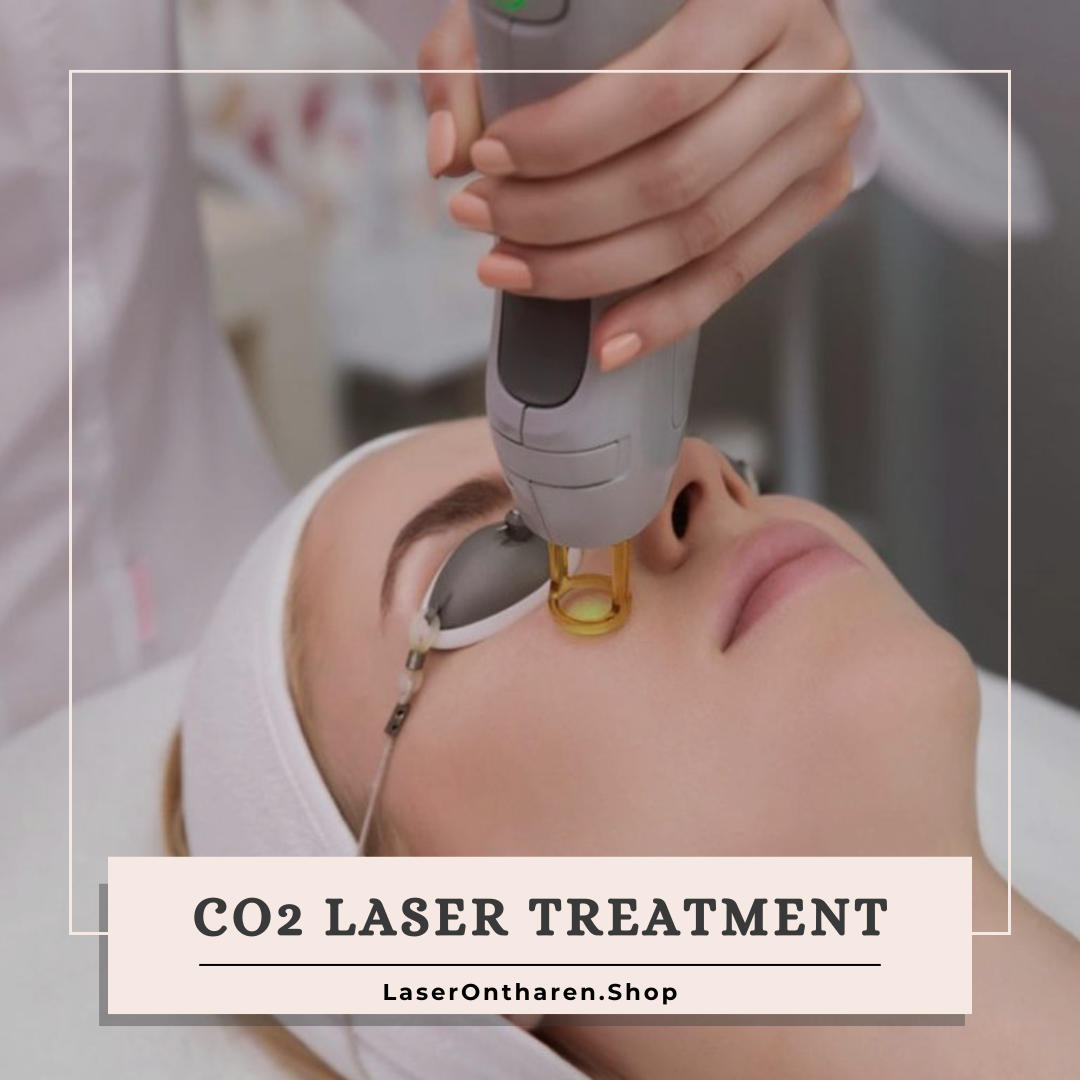Introduction
Surgical scars can be a source of physical discomfort and emotional distress for many people.
Whether from a life-saving surgery or a minor procedure, scars are often an unwelcome reminder of past events.
Fortunately, advancements in medical technology offer effective solutions for reducing the appearance of these scars.
Laser treatment has emerged as a popular and effective method for minimizing surgical scars.
This article aims to provide a comprehensive guide to understanding laser treatment for surgical scars, covering everything from the types of laser treatments available to what you can expect during and after the procedure.
- Warning
Before undergoing any laser treatment, it’s essential to consult with a qualified dermatologist or cosmetic surgeon who can assess your specific concerns and recommend the most appropriate treatment for your skin type and condition.
They can also provide information about the potential risks, benefits, and expected outcomes of the procedure.
Understanding Surgical Scars and How Lasers Can Help
Surgical scars form as a natural part of the body’s healing process after an incision or wound.
The severity and appearance of a scar depend on various factors, including the type of surgery, the patient’s age, skin type, and the location of the scar.
Scar tissue is composed of collagen, a protein that helps heal wounds but often results in a different texture and color compared to the surrounding skin.
How Lasers Work on Scars
Laser treatments work by using focused light to penetrate the skin and target the scar tissue.
This process can help in several ways:
- Stimulating Collagen Production: Lasers can encourage the production of new, healthy collagen, which can replace the old, damaged tissue.
- Resurfacing the Skin: By removing the outer layer of the skin, lasers can reduce the appearance of raised or discolored scars.
- Reducing Redness and Pigmentation: Some lasers target the blood vessels in the scar, reducing redness and improving skin tone.
Types of Laser Treatments for Surgical Scars
There are several types of laser treatments available, each suited to different types of scars and skin conditions. Here are the most common ones:
Ablative Lasers
Ablative lasers, such as CO2 lasers and Erbium YAG lasers, work by removing the outer layers of the skin.
This type of laser treatment is particularly effective for deep scars, as it can significantly improve skin texture and tone.
However, it requires a longer recovery period compared to other types of laser treatments.
Non-Ablative Lasers
Non-ablative lasers, such as Nd:YAG lasers and Alexandrite lasers, penetrate the skin without removing the outer layer.
They work by heating the underlying skin tissue, which stimulates collagen production and helps to improve the appearance of scars over time.
Non-ablative lasers typically have a shorter recovery time but may require multiple sessions for optimal results.
Fractional Lasers
Fractional lasers, including Fraxel, deliver laser energy in a grid-like pattern, creating micro-injuries in the skin.
This method allows for faster healing and less downtime, as it targets only a fraction of the skin at a time.
Fractional lasers are versatile and can be used on various types of scars.
Pulsed-Dye Lasers
Pulsed-dye lasers (PDL) are particularly effective for treating red, vascular scars.
They work by targeting the blood vessels in the scar tissue, reducing redness and promoting a more even skin tone.
PDL treatments are often quick and require minimal downtime.
get the best Vascular laser now!
- +31623800046
- info@laserontharen.shop
What to Expect During Laser Scar Treatment
Understanding what to expect during a laser scar treatment can help alleviate any concerns and prepare you for the procedure. Here’s a detailed step-by-step overview:
Initial Consultation
Your journey begins with a consultation with a dermatologist or laser specialist. This appointment is crucial for assessing your scar and determining the most suitable treatment plan. During the consultation, the specialist will:
- Evaluate Your Scar: The specialist will examine the size, type, and location of your scar to understand its characteristics and how it might respond to laser treatment.
- Discuss Medical History: You’ll be asked about your medical history, including any conditions, medications, and previous treatments that might affect the laser procedure.
- Determine Suitability: Based on the assessment, the specialist will decide if laser treatment is suitable for you and which type of laser will be most effective.
- Explain the Process: The specialist will explain the procedure, expected outcomes, potential risks, and the number of sessions you may need.
- Cost Estimation: You will also receive information on the cost of the treatment, including any potential additional sessions.
Preparation
Proper preparation is essential for a successful laser treatment. Here’s what to expect in the preparation phase:
- Sun Exposure: You may be advised to avoid direct sun exposure and tanning for a few weeks before the procedure. Sun-damaged skin can increase the risk of complications.
- Medications: Certain medications, such as those that increase photosensitivity or affect healing, may need to be discontinued. Always follow your specialist’s advice on this matter.
- Skin Care: The treatment area will be thoroughly cleaned to remove any dirt, oil, or makeup that could interfere with the laser’s effectiveness.
- Topical Anesthetic: To minimize discomfort during the procedure, a topical anesthetic cream may be applied to the treatment area. This needs time to take effect, usually around 30 to 60 minutes before the procedure starts.
The Procedure
During the procedure, you can expect the following steps:
- Positioning: You will be positioned comfortably, and protective eyewear will be provided to shield your eyes from the laser light.
- Laser Application: The specialist will use a handheld laser device to pass over the scar tissue. Depending on the laser type, this may involve short pulses or continuous waves of light.
- Sensations: You might feel a mild stinging or heat sensation. The intensity varies depending on the laser used and the depth of the treatment. The topical anesthetic and built-in cooling mechanisms in the laser device help to alleviate discomfort.
- Duration: The length of the procedure varies based on the size and type of scar. Small scars might take only a few minutes, while larger or more complex scars could take up to an hour.
- Multiple Passes: In some cases, the laser may be passed over the scar multiple times to achieve the desired effect.
Post-Treatment Care
Proper aftercare is vital for optimal results and minimizing side effects. After the treatment, you will receive specific instructions, which may include:
- Soothing Ointments: Applying prescribed ointments or moisturizers can help soothe the skin and promote healing.
- Avoiding Sun Exposure: Just as with preparation, it’s crucial to protect the treated area from sun exposure. Using a broad-spectrum sunscreen with high SPF is recommended.
- Keeping the Area Clean: Gently clean the treated area to prevent infection. Avoid using harsh soaps or scrubbing the skin.
- Managing Redness and Swelling: Redness, swelling, and a sunburn-like sensation are common and usually subside within a few days. Cold compresses and over-the-counter pain relievers can help manage discomfort.
- Follow-Up Appointments: Attend any scheduled follow-up appointments to monitor the healing process and discuss further treatments if necessary.
By understanding these steps, you can approach laser scar treatment with confidence, knowing what to expect at each stage of the process.
This preparation helps ensure a smooth experience and enhances the likelihood of achieving the desired results.
- +31623800046
- info@laserontharen.shop
Recovery Time and Side Effects After Laser Scar Treatment
Recovery times and side effects can vary based on the type of laser used and the individual’s skin type. Here’s what you can generally expect:
Immediate Aftermath
- Redness and Swelling: These are common immediately after the procedure and can last for a few days.
- Discomfort: You may experience a mild burning sensation similar to a sunburn.
- Crusting and Peeling: For ablative and fractional lasers, the treated area may crust and peel as it heals.
Long-Term Recovery
- Gradual Improvement: Collagen production continues over several months, leading to progressive improvement in scar appearance.
- Follow-Up Treatments: Multiple sessions may be required for optimal results, especially with non-ablative lasers.
Potential Side Effects
- Hyperpigmentation or Hypopigmentation: Changes in skin color can occur, particularly in individuals with darker skin tones.
- Infection: Although rare, there is a risk of infection if the treated area is not properly cared for.
- Scarring: In some cases, improper healing can lead to new scars.
Surgical scars Laser treatment Before and After Photos
Before and after photos showcase the potential improvements laser treatment can offer:
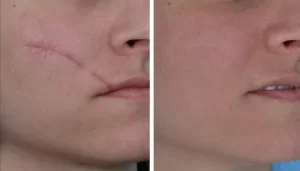
Is Laser Treatment for Surgical Scars Right for You?
Laser treatment for surgical scars may not be suitable for everyone. Here are some factors to consider when determining if it’s the right choice for you:
Skin Type and Color
Individuals with lighter skin tones tend to have fewer complications with laser treatments.
Darker skin tones are more prone to pigmentation issues, but newer laser technologies have improved safety for all skin types.
Scar Characteristics
The type, size, and location of the scar are critical in determining the appropriate laser treatment.
Deep, raised, or red scars often respond well to laser therapy, while flat, white scars may require different approaches.
Medical History
Certain medical conditions and medications can affect your candidacy for laser treatment.
It’s essential to disclose your full medical history to your specialist.
Cost Considerations for Laser Scar Removal
The cost of laser scar removal can vary widely based on several factors:
- Type of Laser Treatment: Ablative treatments tend to be more expensive due to their complexity and longer recovery times.
- Number of Sessions: Multiple sessions may be necessary for optimal results, increasing the overall cost.
- Geographical Location: Prices can vary based on the location of the clinic and the expertise of the specialist.
Average Costs
- Ablative Laser Treatment: $1,500 – $3,000 per session
- Non-Ablative Laser Treatment: $500 – $1,000 per session
- Fractional Laser Treatment: $700 – $2,500 per session
- Pulsed-Dye Laser Treatment: $300 – $600 per session
- +31623800046
- info@laserontharen.shop
Conclusion
Laser treatment for surgical scars offers a promising solution for those seeking to reduce the visibility of their scars and improve their skin’s appearance.
By understanding the different types of laser treatments, what to expect during the procedure, and the recovery process, you can make an informed decision about whether this treatment is right for you.
Always consult with a qualified specialist to discuss your options and develop a personalized treatment plan.
Laser scar removal is an investment in your skin’s health and appearance, and with the right approach, it can lead to significant improvements and increased confidence.
